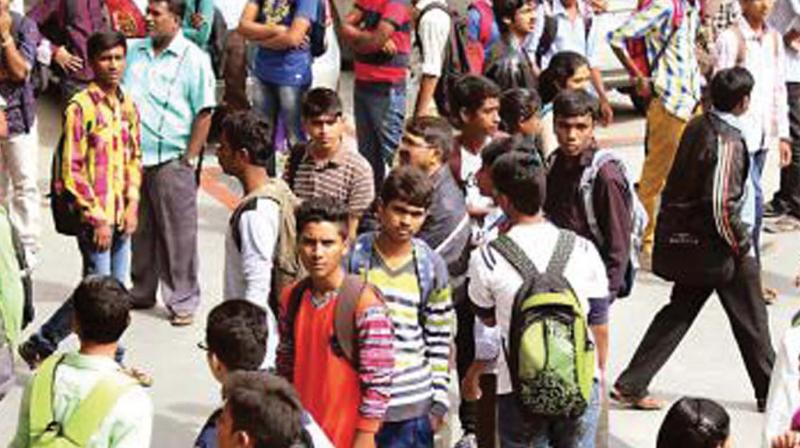Works to integrate VHSC with HSS on
Works for the integration of both higher secondary and vocational higher secondary sections are underway.

Thiruvananthapuram: Even as the results of the vocational higher secondary courses were annou-nced on Wednesday, the vocational higher secondary education sector in the state is on the threshold of a significant change.
Works for the integration of both higher secondary and vocational higher secondary sections are underway.
Ashok Kumar, a teacher at the Siva Vilasam Vocational Higher Secondary School, Thamarak-udy near Kottarakara, said that in the first phase, 66 vocational higher secondary schools had been included in the NSQF in the state.
These schools together have 145 batches. From the next year, more schools have been included in NSQF. The admissions for vocational higher secondary schools which introduced NSQF were through the single window admission process for higher secondary schools. In vocational higher secondary schools admissions is through the single window process of the directorate of vocational higher secondary education.
As per norms, NSQF has to be introduced in 25 per cent of the higher secondary courses by 2020, said Mr Kumar.
The NVEQF is part of the National Skill Qualification Framework (NSQF) proposed by the Union Skill Development and Entrepreneurship Ministry. It envisaged the integration of at least four years of vocational training with formal education from Class IX. This will also offer students the option of pursuing long-term, non-conventional degree courses to acquire the skill sets sought by industry. The new policy, discussed with state governments, proposes to align all such skill development efforts with a common NSQF that sets standards of proficiency for different vocations.
The NSQF is a competency-based framework that organises all qualifications according to a series of levels of knowledge, skills and aptitude. These levels, graded from one to ten, are defined in terms of learning outcomes which the learners must possess regardless of whether they are obtained through formal, non-formal or informal learning.
Under the framework, vocational training will be introduced as an integral part of general education at the secondary and senior levels. There is a provision for arranging hands-on training in an industrial set-up, and on-job training may be provided during vacations for 80 hours.
A total of 12 courses covering nine industrial and service sectors including agriculture, retail, travel and tourism, power, telecom, IT, electronics and hardware, health care and beauty and wellness are taught has been introduced in schools were NSQF implemented. The state government has entered into tie-ups with various organisations for providing skill training to students of higher secondary schools as part of National Skill Qualification Framework (NSQF).
The tie-ups have been entered into with Kerala Agriculture University, Krishi Vigyan Kendra, Indian Research and training centre, Lulu Mall, KTDC, Thiruvanan-thapuram medical college, Kerala State Electricity Board, BSNL, Akshaya Kendras and Keltron for providing in house training to students as part of skill enhancement of students for making them employable.
The pattern of one vocational teacher, one vocational trainer and one lab assistant for taking three hours of vocational training per day has been changed in schools were NSQF had been introduced. It has been replaced by a pattern where an instructor will provide one-hour vocational training per day

